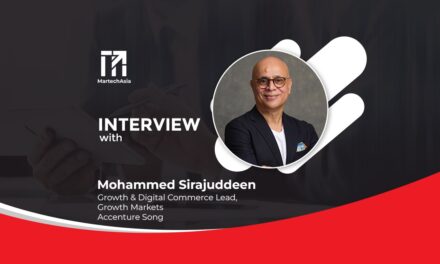Benjamin Soubies, Managing Director, APAC & Japan, Talkwalker, explains why the metaverse is now on the roadmap of all marketers and how they should navigate this new technology.
Why does the world need the metaverse? Isn’t it a reincarnation of Second Life, albeit with better technology?
- The metaverse concept really took off with Facebook’s rebranding as Meta last year. We witnessed at least a 10x increase in conversation volume on the topic following that announcement. Whereas metaverses were a realm familiar to mainly gaming communities built around virtual worlds such as Fortnite and Second Life before, it has now also captured the interest of the broader consumer audiences and industry.
- People seem to be drawn to the opportunities for innovation and transformation that metaverses present. Far from being a low-stakes game world, metaverses hold the promise of introducing new ways to consume, to communicate, to even to make a living, that have never been experienced before.
- With the pandemic and lockdowns, at least 60 million new digital consumers in Southeast Asia have come online and witnessed the advancements of the digital world. In the process, they have become more capable of adapting to new technologies, and perhaps less needy with regard to direct human interaction. The mixed-reality metaverse perhaps mirrors the need for such an in between level of connection.

Why the metaverse is now on the roadmap of all marketers and how they should navigate this new technology
- According to Bloomberg Intelligence, the metaverse could be a nearly $800 billion market opportunity. In order to leverage this, a third of businesses in APAC are already planning to invest in AR or VR in the coming five years (as found in Euromonitor’s digital survey), making baby steps towards metaverse realities.
- Measurement today: As brands and marketers begin running more of these mixed-reality experiments, consumer intelligence should be at the forefront of their considerations in order to measure their customers’ awareness of such technologies, what they are discussing in terms of use cases, and also their organic feedback on the impact of such immersive experiences.
- Measurement in the metaverse: Within these digital worlds, we will also see new ways in which consumer data will become collected and exchanged. Consumer intelligence solutions such as Talkwalker will need to stay on top of these innovations in order to help marketers navigate consumer connections in these spaces.
- Customer experience: Telco giants like Axiata are already leveraging Talkwalker’s technology to create relevant and memorable campaigns, by measuring and understanding consumer sentiment towards the brand – which is covered in our ‘Decoding the connected Southeast Asian consumer white paper. These best practices can and should be leveraged to optimize innovative metaverse-type activations as well.

What brands and marketers must consider before diving into the metaverse?
- A lot of investment is already going to metaverse technology and the creation of metaverses. Perhaps more thought will need to be put towards its safeguards, for example asking:
- What is the line to draw between a fully integrated consumer and consumer privacy in metaverse environments
- What information will metaverses require from people when they create the avatar? Will it be a fair exchange?
- We have made important progress with regard to managing consumer data privacy and enterprises need to make sure that the same level of thoughtfulness and regulation is being applied to metaverse environments.
- There are also the potential health impacts of metaverse technology and immersive experiences that should be investigated and considered. These will help to establish useful parameters (be it age, length of screentime, etc.) to ensure the consumer’s safe engagement with metaverses.
How can brands and marketers measure customer experience in this brand-new world?
- A lot of the research and measurement done today will surround understanding the level of anticipation and expectations of consumers when it comes to metaverse experiences. For example, asking: What is missing in the current experiences available to them?
- Consumer insights on this front will help brands and marketers to identify the gaps, and then design and iterate experiences that truly meet the needs of the consumers – rather than to create virtual experiences for their own sake.
What is the outlook on the adoption of the metaverse and if it will ever become mainstream?
- For the metaverse to become mainstream, the hardware and infrastructure (high-speed internet) will have to be readily available and affordable.
- Until then, we can expect more mainstream applications of Virtual Reality (VR) and Augmented Reality (AR) technologies instead – such as makeup try-on apps, gaming worlds, and virtual test drives which are already gaining traction.
- To ensure that metaverses will not become just a buzzword, platforms in this space must strive to create immediate, pleasant and seamless experiences for consumers. If not, the physical, offline world will likely have a better hold on consumer attention, when it comes to meeting demands for a fully immersive experience.

















